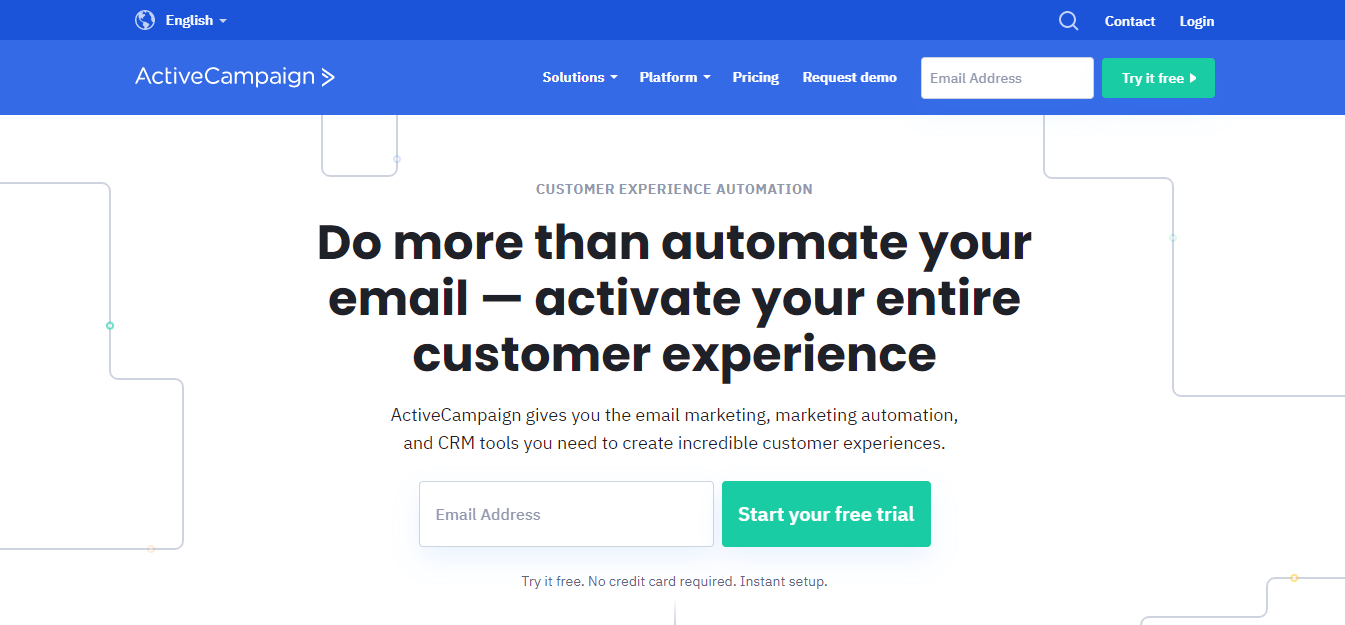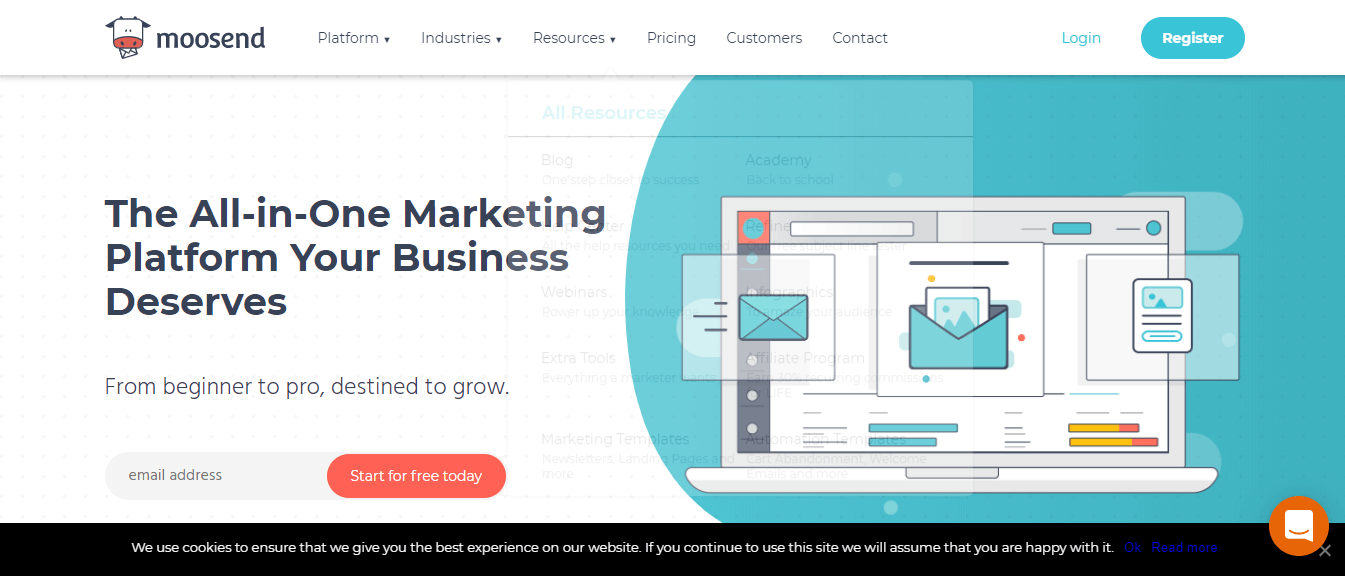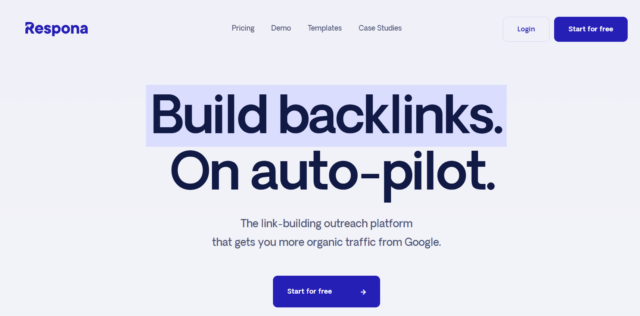Mailchimp is the 800-pound gorilla in the email marketing room. Scratch that, it’s the 8,000-pound gorilla in the email marketing neighborhood. There are many Mailchimp alternatives vying for the multi-billion dollar email marketing crown.
Which one is worthy?
This post will help you identify and choose the best Mailchimp alternatives available right now.
What’s the best Mailchimp alternative?
If you’re reading this post you may have used Mailchimp or at least come across it while wandering the interwebs. It’s an Atlanta based email marketing company that’s worth a few billion dollars.
It seeks to do almost everything. You can manage ads, send emails, create basic popups, and many other things. It also has a large integration ecosystem and a free tier.
If all of this is possible then why would you ever need a Mailchimp alternative?
That’s a good question.
Mailchimp has grown beyond being an email marketing company alone and is now a marketing platform that seeks to do everything. Unfortunately, it does a lot of those things poorly and the UI has gotten bloated. It can be difficult to find many features.
It also has a spam detection engine that often flags legitimate emails you send to your list. When flagged, it can take days to rectify the situation.
For some reason, it has a no-tolerance policy for affiliate marketing. I have a few affiliate marketing websites in my portfolio and this is a big red flag for me.
This is what sparked my search for a Mailchimp alternative. Your reasons may be different but we’re all looking for the same thing – let’s dive in.
1. ActiveCampaign – Best all-around Mailchimp alternative

ActiveCampaign is one of the most powerful email marketing tools on the market. If it’s possible with email marketing then this tool can probably do it. It serves close to 100,000 brands across different industries and I’ve been using it for a number of years.
If I’m not using it on a project in the beginning, I’ll eventually switch over. What’s impressive is that it’s still easy to use – even with all of the features it has inside.
There are three core aspects of ActiveCampaign and a few add-ons you can take advantage of. The main portions of the tool are email newsletters, marketing automation, and CRM.
Within the platform, you’re able to create and assign tags based on the actions people have taken. For example, if someone opened an email and clicked a link, you can apply a tag. Even if they didn’t take an action, you can apply a tag. Conversely, you can score them and launch different automations when they reach a certain threshold.
The visual automation builder makes it dead simple to understand how each action is related to another and you can edit anything with a few button clicks. There’s also something called an automation map to show you how each sequence is connected to another.

In addition to actions within an email, you’re able to track actions on your website by embedding a lightweight script. If you see that someone is visiting certain pages, you can launch an email sequence or stop another one.
What continues to surprise me is the dedication to a simple UI. I’ve not had to reach out to support because I was lost or didn’t understand how something worked. The only time I’ve had to communicate with support was when I was building some complicated conditional logic for one of our funnels.
It was more a case of me doing something advanced (99% of people won’t use ActiveCampaign in the same way) than the tool being difficult to use.
ActiveCampaign also has a well-developed CRM system that ties in nicely with the email marketing and automation features. You’re able to set up triggers contingent upon where the contact is within your deal flow. Of course, you can use the Kanban board interface (similar to a scrum board) to set up custom deal flows based on your specific needs.
The last aspect that may surprise you is ActiveCampaign’s pricing. You can get started with most of the features such as tagging, automation, newsletters, etc. for just $9/m. Of course, like other email marketing tools, the pricing goes up when you add more contacts.
ConvertKit – best Mailchimp alternative for bloggers

ConvertKit is a newer addition to the email marketing game but it has made a name for itself by sharing its numbers in public and focusing on bloggers. Of course, that doesn’t mean people who don’t identify as bloggers or creators can’t use it.
It’s a great alternative to Mailchimp for some people because it was built with them in mind. The features, the usability, and the team itself are all geared toward making sure creators succeed with the platform.
There are three main aspects of ConvertKit. It provides landing pages, basic opt-in forms, and an email marketing suite. Segmentation in ConvertKit doesn’t work through a traditional list-based system, instead, it works through a tagging system.
You have one master list and then you can slide and dice your contacts in any way that makes sense for you. For example, you may tag people based on how they signed up for your list or based on email interactions.
It has a strong marketing automation platform that’s designed to make it easy for you to set up different sequences such as welcome emails, product launches, etc. It’s similar to ActiveCampaign in appearance but not quite as powerful. This is fine if you’re not using advanced segmentation and automation triggers and can still take you a long way.
It has a form builder that was basic for a long time and was recently upgraded. Of course, it can’t hold a candle to KyLeads but it’ll still help you out if you needed opt-in forms yesterday. The unfortunate part is that they carry ConvertKit branding by default.
The last pillar of ConverKit is the landing pages. This is a more recent addition it made after amassing thousands of customers and it’s still developing it (I’d recommend a dedicated landing page tool for now). There’s a small collection of landing page templates you can quickly set up to start driving new email subscribers.
The page templates are divided across a few key categories which include:
- Lead magnet
- Coming soon
- Profile
- Course sign up
As you can see, the pages are geared towards creators and wouldn’t be suitable for something like an Ecommerce business. Again, there’s nothing wrong with that because ConvertKit hasn’t been built for Ecommerce brands.
For a long time, ConvertKit’s pricing didn’t include a free plan or even a free trial and started at around $30/m for 1,000 contacts. That’s 3x more expensive than ActiveCampaign’s entry-level tier. A few months ago, it introduced a free plan that allows you to manage up to 1,000 subscribers and gain access to limited features.
The paid plans start at $29/m for all features. As your subscribers increase, the cost also increases in lockstep.
GetResponse – Best marketing suite

GetResponse is a much older player when it comes to email marketing and was the first tool I ever used. At the time, real email automation didn’t exist unless you were paying enterprise prices. We were still working with autoresponders that only allowed you to set a time interval before the next message.
I jumped ship for ActiveCampaign because it introduced email automation sooner. In the intervening years, GetResponse has grown into a marketing powerhouse.
Consider it your marketing basecamp and from there you can launch full-funnel multi-touch campaigns. I know, there are a lot of buzzwords there but bear with me, I’ll show you how it lives up to the hype.
It has all the features inherent in email marketing tools such as a newsletter builder, analytics, list management, segmentation based on different criteria such as demographics, and more. It goes well beyond that by providing a webinar platform, Facebook ads, integrations, opt-in forms, landing pages, deep ecommerce integrations, and other tools.
GetResponse is trying to be the only marketing tool you need. For many customers, it is. Like ActiveCampaign, it has deep integrations with popular Ecommerce platforms. This includes Shopify, BigCommerce, Magento, and others. This allows you to create and send tailored sequences based on activities such as cart abandonment.
If you’ve ever used marketing automation then you’ll be right at home within the platform. It has a drag and drop interface that lets you build out advanced sequences to accomplish different goals.
GetResponse sets itself apart from other email marketing tools and positions itself as a strong Mailchimp alternative with its advertising integration. You’re able to connect your Facebook Ads account and manage your campaigns from within the platform.
The benefit of this process is easy access to your subscriber list which makes it possible to build effective retargeting campaigns. Brands have seen ROI over 1,300% with retargeting alone.
Get response shows no signs of slowing down and the entry-level plans are reasonably priced. You can get started for just $15/m with a limit of 1,000 contacts.
Respona – Best Outreach-Focused Mailchimp Alternative
Respona is an innovative outreach automation tool that stands out as a great alternative to Mailchimp, particularly for those focused on link building, PR, or content promotion.
Tailored for efficiency and precision in your email campaigns, Respona combines the power of search for finding high-quality prospects with robust personalization options to make each email count.
What sets Respona apart is its dedication to the outreach process. It simplifies finding and connecting with influencers, journalists, and bloggers, ensuring that you can establish relationships and secure coverage or backlinks with ease. The platform’s dynamic email templates allow you to inject personalization into your pitches, increasing the chances that your messages will not just be seen, but actioned.
Respona’s interface is intuitive, allowing you to create and manage campaigns with minimal fuss. It’s not just an email tool – it’s a suite of features that supports the entire outreach journey. You can automate follow-ups to stay top-of-mind without the manual hassle, and its built-in analytics let you track the performance of your outreach efforts to continually refine your approach.
What I appreciate most about Respona is that it blurs the lines between a CRM and an email marketing platform. You can keep track of your interactions with each prospect within the tool, helping you manage relationships as if it were a CRM tailored to PR and marketing experts.
While Respona offers powerful automation and personalization, it’s also competitively priced. It doesn’t offer a free plan, but the value-packed tiers are well-suited for serious marketers who want to make every outreach effort count. If you’re looking to scale your email outreach without scaling the team or workload, Respona could be the Mailchimp alternative you’re after.
Moosend – best free Mailchimp alternative

Moosend is another newer email marketing service that’s quickly scaled to over 1,000 customers. It has ambitions of being an all-in-one marketing platform. It’s not quite there yet but it’s making solid strides in that direction.
Similar to ConvertKit, it has three main areas where it focuses attention. The core email marketing tool, opt-in forms, and landing pages.
Within the email marketing aspect of the tool, there’s an emphasis on simplicity, segmentation, and human-readable data. It’s simple to understand what’s working for your brand and send the right message to the right person.
There are over 40 templates to choose from and built-in A/B testing that makes it a breeze to find the best performing campaigns. The marketing automation interface is similar to other email marketing tools and allows you to choose from pre-built sequences or set up your own.
The landing pages are still in their infancy so there aren’t too many features or templates but they’ll get the job done if needed. Just like with ConvertKit, I’d recommend a dedicated landing page builder. One thing the pages have going for them is a drag-and-drop builder that’s easy to use.
The opt-in forms round out the feature set with basic popup forms for email capture. These can appear in different areas such as the center of the screen, a corner, or even embedded in a page.
Moosend is free to start for up to 1,000 subscribers and a limited number of features. Pricing starts at $10/m and can go to thousands of dollars a month depending on how many subscribers you have.
MailerLite – best for smaller brands or personal projects

MailerLite isn’t nearly as popular as some of the other tools in this space but it’s a solid platform for smaller websites or brands. If you advance beyond a certain point, you can choose to switch to something like ActiveCampaign or GetResponse.
Of course, if you fall in love with it then, by all means, stick around. I have one pet-peeve about the platform. Whenever I try to create an account, it blocks me with its automated system and I have to go back and reach out to them to unblock me. It’s time-consuming and seems to work poorly in my experience.
That aside, it brings together email marketing, landing pages, popups, and even surveys. That way you can understand your customers, turn them into subscribers, and then deliver what they want. It’s akin to the perfect storm if you can use it properly.
Though it’s a decent alternative to MailChimp, there’s nothing that truly helps it stand out. Another challenge I’ve had with this platform are slow response times to support queries. That’s why I said it’s only ideal for personal projects or smaller brands.
Conclusion
When the most popular email marketing tool in the world isn’t a good fit for you, it’s time to look elsewhere. The Mailchimp alternatives here have different focuses, strengths, and weaknesses. Some of them are great no matter what your business is while others are only ideal when you’re at a certain stage in your business’ growth.
If you’re looking for something that will serve you well for years to come then ActiveCampaign is my top pick. If you’re looking for a tool that combines email marketing with other functions then GetResponse is a strong choice.
ConvertKit is pricier than the competition but has a clear emphasis on servicing bloggers and creators. In the end, it’s your choice – I’m only here to make it easier. Choose the one you like, test it out, and use KyLeads to grow your mailing list.
